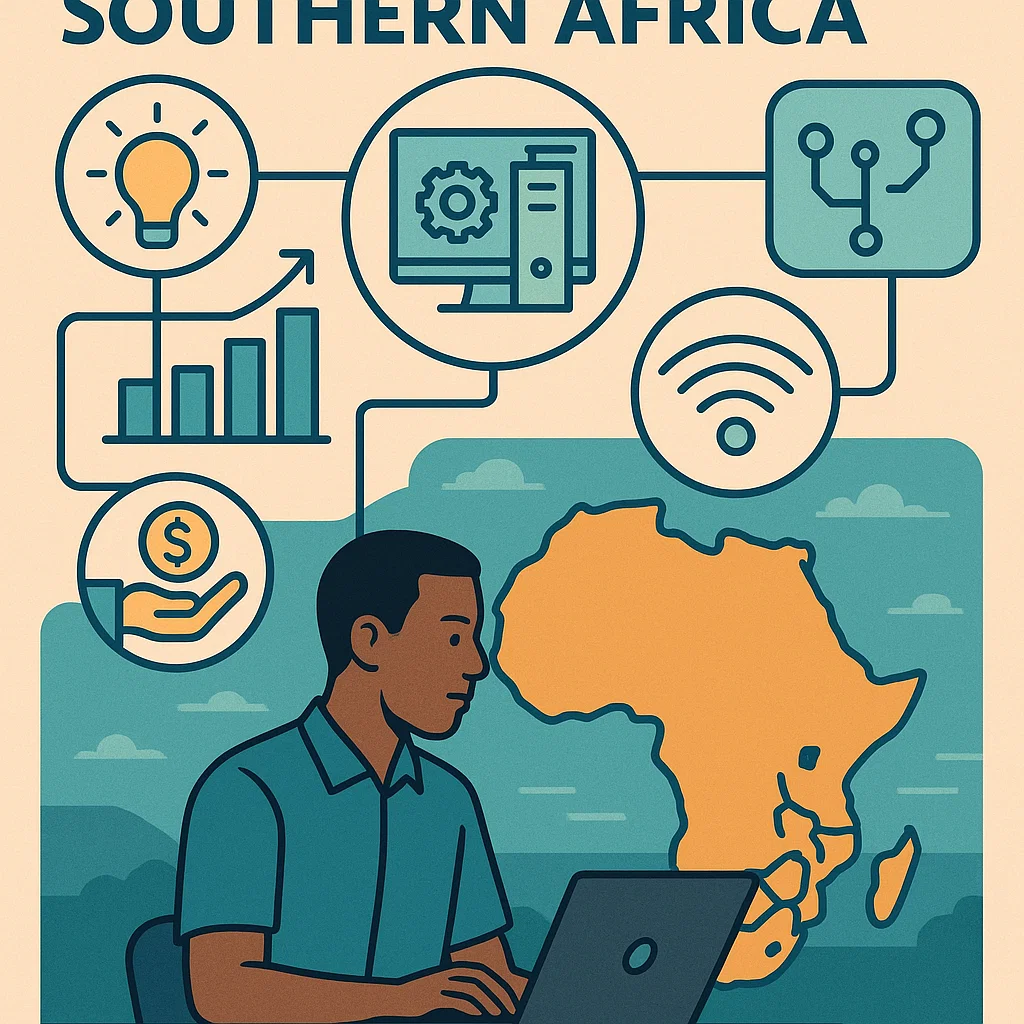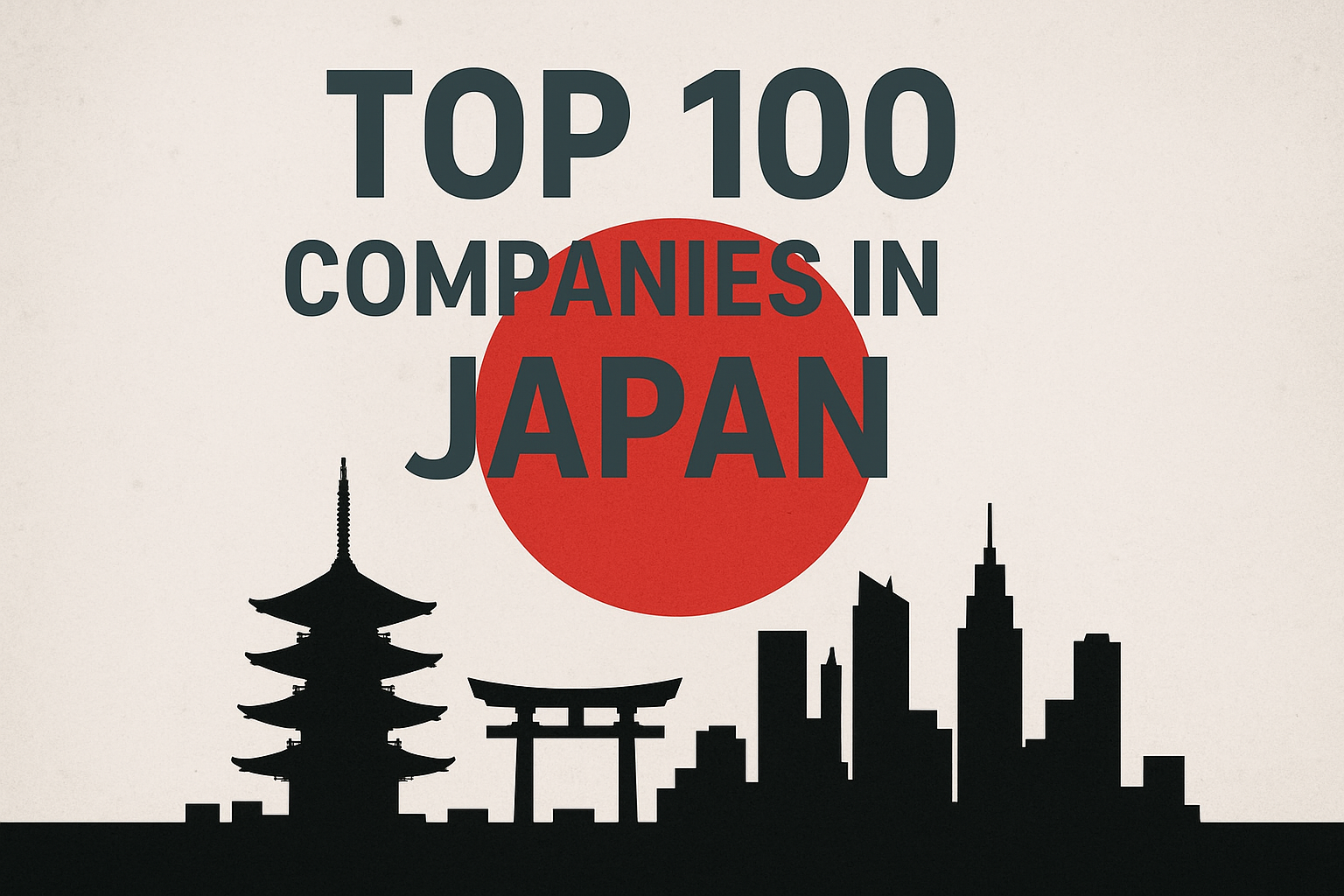Southern Africa is one of the most dynamic yet underexplored regions for IT investment. The combined GDP of the Southern African Development Community (SADC) is estimated at over $750 billion, with South Africa alone contributing nearly $399 billion, making it the region’s economic powerhouse. Mozambique’s economy, valued at around $18 billion, is on a rapid growth path due to natural gas projects. Angola, with a GDP of $106 billion, is diversifying beyond oil and investing in digital infrastructure. Zambia contributes about $29 billion, heavily reliant on copper mining but opening up to fintech and digital services. Smaller economies like Botswana ($20 billion), Namibia ($13 billion), and Eswatini ($5 billion) may seem modest in scale but offer stable environments and high demand for digital solutions.
Despite differences in size and maturity, these markets share common threads: young populations, increasing internet penetration, and government initiatives to push digitalization. This combination makes Southern Africa a fertile ground for IT service providers who can bridge infrastructure gaps, create scalable digital platforms, and deliver cost-effective solutions. For Pakistani businesses and other international IT players, this region represents a long-term growth opportunity waiting to be tapped.
Economic Snapshot of Southern Africa
Southern Africa is not a single market — it’s a patchwork of economies, each with its own strengths, weaknesses, and digital appetite. For IT businesses, this diversity means multiple entry points and a chance to tailor solutions country by country.
South Africa
- GDP: ~$399 billion (2024 est.)
- Profile: The regional economic powerhouse, home to Africa’s most advanced financial sector, modern infrastructure, and the largest startup ecosystem on the continent. Johannesburg and Cape Town are hubs for fintech, e-commerce, and software development.
- IT Implication: High demand for enterprise solutions, cybersecurity, cloud migration, and e-government partnerships. South Africa is the natural anchor for expanding into the rest of the region.
Mozambique
- GDP: ~$18 billion
- Profile: Traditionally agrarian but now driven by multi-billion-dollar LNG (liquefied natural gas) projects. The economy is in “catch-up mode,” building roads, ports, and digital infrastructure.
- IT Implication: Needs digital systems for logistics, energy project management, mobile banking, and public administration. Portuguese is key for operations here.
Angola
- GDP: ~$106 billion
- Profile: Africa’s second-largest oil producer, but heavily exposed to commodity shocks. The government is prioritizing diversification into banking, telecoms, and trade.
- IT Implication: Opportunities in digital banking, compliance systems, e-commerce, and governance solutions. Portuguese-speaking IT partners have an edge.
Zambia
- GDP: ~$29 billion
- Profile: A copper-rich nation seeking to reduce dependency on mining by investing in services and technology. Internet use is growing quickly, with mobile money adoption outpacing traditional banking.
- IT Implication: Demand for fintech, e-government platforms, and mining tech solutions such as monitoring systems and supply chain platforms.
Zimbabwe
- GDP: ~$21 billion
- Profile: Long-running economic challenges, hyperinflation, and currency issues have stifled growth. Yet Zimbabwe has one of the best-educated populations in Africa, producing skilled professionals in science and technology.
- IT Implication: Cost-effective digital solutions are in demand. Outsourcing, training platforms, and low-cost SaaS products can thrive here.
Botswana
- GDP: ~$20 billion
- Profile: Politically stable and resource-rich (diamonds), Botswana is pushing to diversify into tourism, finance, and technology.
- IT Implication: Digital finance, smart tourism solutions, and e-government platforms are the most attractive sectors.
Namibia
- GDP: ~$13 billion
- Profile: Stable, business-friendly, with a growing renewable energy sector. Namibia’s small population makes it nimble in adopting new systems.
- IT Implication: Green tech IT platforms, logistics solutions, and digital transformation for SMEs are emerging needs.
Eswatini
- GDP: ~$5 billion
- Profile: Small but strategically located between South Africa and Mozambique. The economy relies on manufacturing, agriculture, and cross-border trade.
- IT Implication: Government is actively seeking digitalization in health, tax, and education. Strong potential for pilot projects that can scale to larger markets.
Lesotho
- GDP: ~$3 billion
- Profile: A mountainous, landlocked country dependent on remittances and textiles. Despite its small economy, Lesotho has high mobile penetration.
- IT Implication: Mobile-based services, fintech, and e-health platforms can gain traction quickly.
Regional Takeaway:
This mix of large, resource-driven economies (South Africa, Angola, Zambia) and smaller, stable markets (Botswana, Namibia, Eswatini, Lesotho) creates a balanced entry landscape. For IT companies, the strategy is clear: anchor in South Africa, expand into Mozambique and Angola for scale, and leverage smaller countries as low-risk pilot grounds for digital innovation.
Digital Readiness in the Region
While Southern Africa is not yet on par with Asia or Europe in terms of digital infrastructure, the pace of growth is significant. Understanding the region’s readiness is key for IT service providers looking to set up operations or offer solutions.
Internet Speeds & Connectivity
- South Africa is the clear leader, with urban broadband averaging 30–40 Mbps, supported by fiber rollouts in Johannesburg, Cape Town, and Durban. Mobile data coverage is wide, though rural areas lag behind.
- Mozambique and Angola are catching up, with undersea cables like SEACOM and SAT-3 boosting capacity. Average speeds hover between 10–20 Mbps, but urban centers are seeing new fiber networks.
- Eswatini and Lesotho remain behind, averaging 5–15 Mbps. Connectivity here is largely mobile-driven, with satellite and limited fiber providing extra coverage.
- Botswana, Namibia, and Zambia sit in the middle, with average speeds around 15–25 Mbps. These countries rely heavily on mobile broadband, but governments are actively investing in digital infrastructure projects.
Opportunity: IT services must be optimized for mobile-first environments and designed to function in low-bandwidth conditions — offline features, light apps, and cloud solutions tailored for patchy connectivity.
Youth Literacy & Education
- Literacy rates among youth (ages 15–24) are above 95% in most of Southern Africa, with countries like Zimbabwe and South Africa producing highly literate workforces.
- Universities in South Africa, Namibia, Zambia, and Eswatini are offering IT and computer science programs, but graduate output remains small relative to demand.
- The hunger for digital skills is high, and private training academies, coding bootcamps, and partnerships with international IT firms are filling the gaps.
Opportunity: Digital training services, IT academies, and partnerships with universities can not only supply talent pipelines but also build goodwill with governments and local communities.
IT Talent Supply & Outsourcing Potential
- South Africa is home to the largest pool of IT professionals in the region, though demand often outstrips supply.
- Zimbabwe, despite its economic troubles, continues to produce skilled engineers and software developers, many of whom freelance or migrate abroad.
- Smaller countries like Eswatini, Lesotho, and Botswana have limited but growing IT graduate pools. These nations often rely on outsourcing or importing expertise for large-scale projects.
Opportunity: For international companies, especially from Pakistan, there’s space to establish outsourcing hubs, training centers, and knowledge-transfer partnerships. With competitive pricing and strong technical skills, foreign IT service providers can bridge the region’s skills shortage while building local teams over time.
IT Business Opportunities
Southern Africa’s economic challenges are real — uneven infrastructure, currency volatility, and limited talent pools. Yet these same challenges create room for IT services to step in with practical, cost-efficient solutions. The biggest opportunities lie in government digitalization, fintech, SME services, and industry-specific platforms.
1. Government Digitalization
Governments across Southern Africa are under pressure to modernize service delivery, reduce corruption, and improve efficiency. Digital transformation is becoming a national priority.
Key Areas of Opportunity:
- e-Government Portals: Centralized platforms for tax filing, business licensing, land registration, and legal records can cut bureaucracy and attract investment. South Africa and Botswana are piloting these systems, while Eswatini and Mozambique are still at early stages.
- Digital Healthcare Systems: Hospitals and clinics struggle with fragmented patient records. Electronic health records, telemedicine platforms, and supply chain tracking for medicines are in demand. In rural areas, mobile-based health apps can bridge doctor shortages.
- Education Technology: Covid-19 exposed major gaps in e-learning. Learning management systems (LMS), digital exams, and hybrid education platforms are sought after, especially in countries like Zambia and Zimbabwe where school systems are overburdened.
Why it matters: Governments are often the largest spenders in these economies. Winning public-sector contracts can create long-term revenue streams, while pilot projects in smaller states (Eswatini, Lesotho) can be scaled to larger ones (South Africa, Angola).
2. Financial Technology (Fintech)
The region has millions of unbanked or underbanked citizens, with mobile phones far outnumbering traditional bank accounts. This makes fintech the most disruptive IT opportunity.
Key Areas of Opportunity:
- Mobile Banking Apps: Zambia and Zimbabwe have shown strong adoption of mobile money. Expanding secure, multilingual mobile banking platforms will continue to grow.
- KYC/AML Compliance Systems: Banks face rising pressure to comply with anti-money laundering and “know your customer” regulations. Automated compliance solutions are a high-value niche.
- Micro-lending & Digital Wallets: Platforms offering small loans, peer-to-peer transfers, and digital savings accounts can leapfrog traditional banking infrastructure.
- Cross-Border Payments: Trade across SADC borders often faces currency and banking hurdles. Blockchain-based or stablecoin payment solutions can fill this gap.
Why it matters: With fintech adoption already proven by players like M-Pesa in East Africa, Southern Africa is ready for its own wave of digital finance innovations.
3. SME Digital Solutions
Small and medium enterprises (SMEs) are the backbone of Southern African economies, but digital adoption is still in its infancy. Most rely on paper records or outdated tools. Affordable, accessible IT solutions can transform their operations.
Key Areas of Opportunity:
- ERP and POS Systems: Cloud-based, lightweight ERP systems and mobile POS platforms for shops, restaurants, and small manufacturers.
- HR, Payroll, and Inventory Software: Low-cost subscription-based platforms that help SMEs automate back-office functions.
- Cloud Hosting & Data Services: Offering localized hosting solutions to SMEs at competitive prices, with compliance to regional data laws.
Why it matters: SMEs collectively employ millions across the region. By creating affordable SaaS products tailored for local markets (multi-currency, offline support, local tax compliance), IT firms can scale quickly.
4. Sector-Specific Solutions
Southern Africa’s industries create unique IT needs. Companies entering with tailored solutions can carve out profitable niches.
- Mining & Energy:
- Digital monitoring and safety systems for mines.
- IoT-based equipment tracking and predictive maintenance.
- Energy management platforms for oil, gas, and renewable projects.
- Countries: South Africa, Zambia, Angola.
- Tourism & Hospitality:
- Online booking platforms for eco-lodges and safaris.
- Mobile apps for cultural and adventure tourism.
- Virtual reality tours and customer engagement platforms.
- Countries: Botswana, Namibia, South Africa, Zimbabwe.
- Agriculture:
- Digital marketplaces connecting farmers with buyers.
- Crop monitoring apps using satellite data.
- Logistics software for farm-to-market delivery chains.
- Countries: Mozambique, Zimbabwe, Zambia.
Why it matters: These industries are central to the region’s GDP. By integrating IT into traditional sectors, companies can unlock productivity gains and establish long-term client relationships.
✅ Takeaway: Southern Africa doesn’t need “imported Silicon Valley” ideas. It needs practical, localized IT services — mobile-first, affordable, and resilient in low-bandwidth environments. Companies that focus on solving real pain points in governance, finance, SMEs, and resource industries will have the strongest market fit.
Market Entry Strategy
Anchor in South Africa
- Incorporate a PTY Ltd in Johannesburg or Cape Town for legitimacy.
- Build first client base among banks, corporates, and government departments.
Scale Through Partnerships
- Partner with telcos and ISPs in Mozambique, Zambia, and Angola.
- Collaborate with universities for training programs and talent pipelines.
Localized Approach
- English works in most markets, but Portuguese support is essential for Mozambique and Angola.
- Price services in South African Rand or USD to reduce currency risk.
Delivery Model
- Keep development and R&D in Pakistan (cost advantage).
- Place sales and support staff in Southern Africa for local trust.
Risks to Manage
- Political instability: Zimbabwe and Angola can be unpredictable. Keep exposure limited.
- Currency volatility: Always bill in stable currencies (USD/ZAR).
- Connectivity gaps: Build offline-capable apps that function in low-bandwidth settings.
- Trust barriers: Employ local staff for client-facing roles.
Why Pakistani Companies Have an Edge
- Cost efficiency: Pakistani software houses can offer world-class services at competitive prices.
- Experience in developing markets: Solutions built for South Asia’s infrastructure and bandwidth realities fit Southern Africa well.
- Government ties: Pakistan’s diplomatic missions in Pretoria, Harare, and regional coverage can help open doors.
Conclusion
Southern Africa is a market in transition — resource-rich, youthful, and eager for digital transformation. For IT businesses, the opportunity is to anchor in South Africa, expand through stable hubs like Botswana or Namibia, and then reach growth markets like Mozambique, Zambia, and Angola.
It’s not a region for overnight wins, but with the right partnerships, localized strategies, and a long-term view, IT service providers can establish a strong and profitable footprint across the Southern Africa region.







